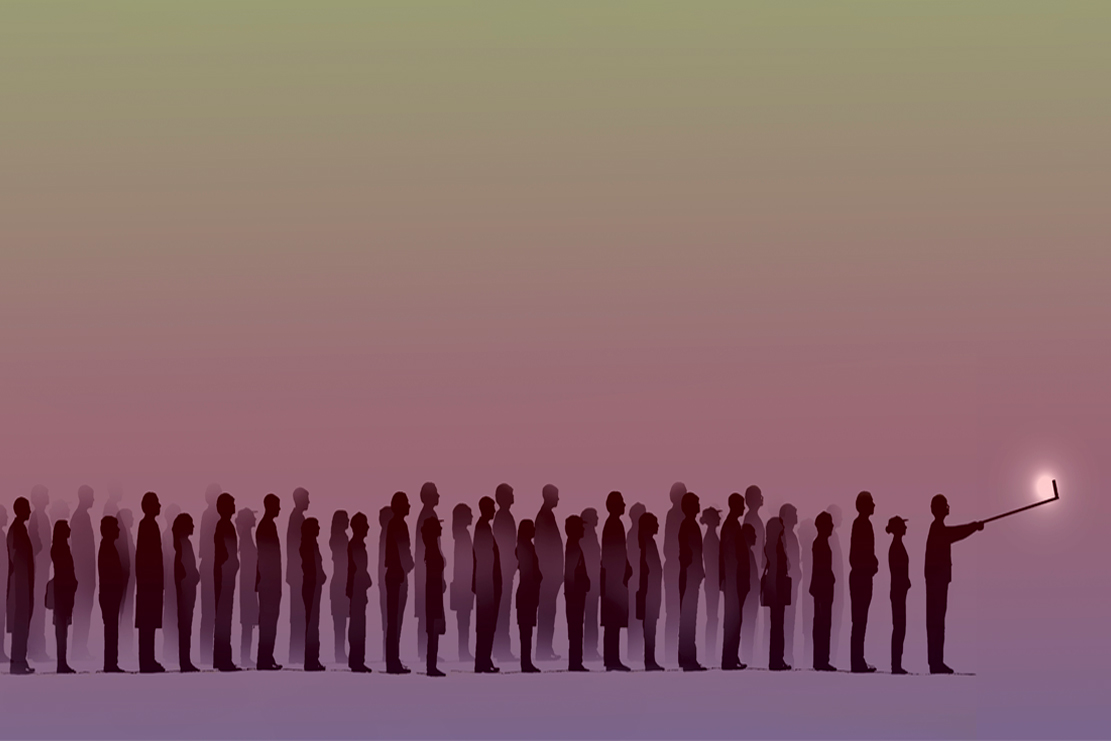By Kyle MacNeill
Copyright newstatesman

At 10.52pm on 3 July, EmilyCC is crouching in front of her Christmas tree, tidying away a pair of zebra-print boots. I know this because I am one of the 275 viewers watching her livestream. I’ve been trying to land an interview with her for weeks. But I can see that EmilyCC is on the phone to someone else. “Like right now? I could do it right now. Just email me the Zoom and I can just join,” she says in the background. It’s then that I realise that she is speaking to her manager – about me. “OK, I have to do something, so I’ll just keep this [stream] up,” she tells her viewers.
Seconds later, she’s on my Zoom link – and she’s still streaming, on mute. I feel like a fly on a broken fourth wall. “It’s weird, but it’s my life,” she says. She’s 28, with long blonde hair and bright blue eyes, and lives in Austin, Texas. She broadcasts almost everything 24/7 to her 396,000 followers on streaming site Twitch. For the last 1,325 days, she’s resisted any temptation to press pause, relentlessly beaming her entire existence to her voyeuristic devotees.EmilyCC is the current queen of lifestreaming: broadcasting your entire existence online. She’s far from the first to indulge in this strange act of self-surveillance. (And way before it was a thing, auteurs were fascinated by the idea of constant documentation. “Cinema is truth 24 times a second, and every cut is a lie,” Jean-Luc Godard, master of the handheld camera, quipped.) But lifecasting is 24 hours a day; and offers the promise of longer-lasting celebrity.
It really began in the late Eighties with Steve Mann, an eccentric, forward-thinking maverick in the field of wearable technology. “I was the first person to stream live video to the internet, and it happened to be a live feed from my EyeTap device, allowing others to see out through my eyes, in the visible, infrared, and ultraviolet spectrum as well as to be able to see sound waves, radio waves,” he explains. Looking a little like if Ant Man went to Goldsmiths, his clunky contraption captured his perception of the world around him. It also captured the imagination of thousands; by 1998, a “Glogger” community of lifeloggers had emerged, with Mann at the helm.
Like most of the early internet, it had a utopianism at its centre. “It’s fun being a cyborg, leading a somewhat nomadic lifestyle,” one of Mann’s early websites reads. “A lot of them came out of this early live-journalling, personal-home-paging, DIY internet culture that’s totally non-commercial… you might have a cam of yourself as part of that online presence,” says Data & Society director Alice E Marwick. “It was fun, exciting, optimistic, joyful: a playground for you and your friends.” Naivety and mundanity were also part of the novelty; web browser Netscape beamed a fish tank into thousands of households. But lifelogging can get dull fast. “Sometimes if I’m cleaning I’m like, fuck, this is boring. And I feel kind of bad. But that’s the whole thing of 24/7. If I didn’t do all that on stream, it wouldn’t be my life,” EmilyCC says.It’s why early lifestreamer Jennifer Ringley – AKA JenniCam – widely known as the internet’s first camgirl, spiced up any banality with nudity. In April 1996, the Pennsylvania-based student began sharing images from a webcam in her college dorm room. At first, it would refresh every three minutes; but after graduating and moving to Washington DC, she enforced a paywall that updated images more frequently and included NSFW content.By this point, up to four million people were tuning in daily to see Ringley live her unfiltered life. She referred to it at the time as a “human zoo” – a never-ending exhibit that got millions to press their faces up to their screens and ogle her every move. “I keep JenniCam alive not because I want or need to be watched, but because I simply don’t mind being watched,” she wrote. By the late Nineties and early Noughties, other lifecasters like CollegeBoysLive and DotComGuy had emerged and self-surveillance was becoming the norm; Big Brother was watching us, but we were also watching Big Brother contestants sleep.
As New Year’s Eve of 2003 turned into New Year’s Day of 2004, JenniCam broadcast for the last time, shutting down because of a new anti-nudity policy from PayPal. “Let the credits roll, Jennicam is dead,” read a BBC obituary. “There will be no more viewings of Ms Ringley slumped in front of the TV, doting on her countless pets, idly plaiting her hair, pottering around her house or sauntering naked between rooms.” Lifestreaming had faded into the background; waiting, on standby, for a vital refresh.
It took less than a week for lifestreaming site Justin.tv to descend into hoax homicides. “On day four someone reported a stabbing in our apartment,” co-founder Justin Kan remembers. The cops came with guns drawn and pointed them at Kyle’s head [Vogt, another co-founder]. We were like, holy shit, have we gone too far?”
It hadn’t meant to play out like this. Launched in 2007, the new platform had promised lifestreaming on a whole new level, fuelled by better tech and broadband. Justin.tv came at a time when social media was nascent; YouTube and Facebook were in their infancy. “We had this idea that people were interested in following other people and you could make someone famous on the internet if you’ve got a lot of attention to them,” he says.But things got dark quickly. The trolling began with ordering pizzas; then, it became far more sinister with the fake stabbing. “We didn’t have any expectation that that would happen. It was totally crazy. Like, holy, shit. All these people are causing various disruptions in our lives.” (The show went on; over the next few months, Justin did everything from going on dates to heading to Scientology conferences. Marwick, who was studying in San Francisco at the time, remembers Kan being an IRL local legend. “He would show up to a party wearing his huge backpack with a giant rig on it… people would be excited because they knew they would be in his footage but none of us were watching it.”)
This vulnerability to sabotage is the bane of the lifestreamer. EmilyCC has to contend with disgruntled viewers constantly pushing her to do more; glass-tappers at her human zoo. On Reddit, people complain that she is often either asleep or not on camera at all (her laptop is recording 24/7, but she doesn’t always stream when she’s out and about). “People are always like, oh my God, she lays in bed all the time. I don’t think I sleep as much as I should, but this is how the stream usually goes. I get ready in the bathroom, that’s my privacy,” she says.
Justine Ezarik – aka, iJustine – has also experienced these gaming-chair critics firsthand when she joined Justin.tv and became its star streamer. “It started out really fun. There was literally no one at the time doing what we were doing so it was so cool to be on the cutting edge of tech.” But it soon became draining. “If there was a word beyond exhausting, I’d use that. It’s hard to explain because it was so mentally taxing to be self-aware 24/7. I’d also have to try to keep up with chats, moderate small arguments, make sure everyone is having a fun time and also get any actual work done that I needed to do. I’m not a parent, but in some ways, I think it could be a similar feeling – except I had thousands of people to try to keep in line.”This burnout is the reason that Ezarik, now a popular YouTuber, lasted as iJustine for just six months. “I started feeling a lot of stress and anxiety of being watched 24/7 – I had started taking more breaks for a few hours, then hours turned into days,” she says. “There were times I’d just be reading the chat and people were being so mean I’d have to just walk away, have a little cry and come back. I think that’s when I knew this wasn’t fun anymore and it was time to continue on a new journey,” she says.So why would you inflict this misery upon yourself? For some, it’s the joy of exhibitionism. For others, livestreaming is their livelihood; while EmilyCC doesn’t divulge revenue figures, Streams Charts estimates her monthly earnings as somewhere between $2,798 to $8,759 based on her 3,530 paying subscribers (more popular Twitch streamers earn tens of thousands of dollars per month). But she also emphasises the connections she makes with her fans. “I’m an only child. I’ve always been a bit of a loner. I have friends, but not a huge amount. I hang out with them on the stream,” she says.Others have pursued it as a type of performance art. In December 1999, dotcom millionaire and provocative artist Josh Harris notably recruited dozens of young New Yorkers to live in a camera-filled bunker, as an elaborate experiment to show his vision of our privacy-invaded future. Cops shut it down on the first day of the new millennium after it rapidly descended into a Stanford prison-style nightmare. But Harris was aware that this was the future. “Lions and tigers used to be kings of the jungle and then one day they wound up in zoos; I suspect we’re on the same track,” he said of humans in 2009 documentary We Live In Public.
But by the end of the 2000s, lifestreaming was being made largely obsolete by new platforms. Shorter and shorter content was required to fit constantly updating feeds. “Snapchat and Instagram Stories were kind of the spiritual successor to Justin.tv and people showcasing their lives. But instead of doing 24 hours in a day, they would just do 20 seconds,” Kan says.
In 2011, Kan launched Justin.tv spin-off Twitch, using video gameplay as the “key conversation piece” to keep things interesting. It’s since become a streaming behemoth: 26.5 million visitors watch Twitch every single day. Many of the most popular performers host infrequent subathons: marathon streams where subscriptions and donations extend the timeframe. But committed lifestreaming, around the clock, is relatively rare. EmilyCC is one of the few people on the site currently streaming 24/7 (and the Always On category is mainly filled with gamers).It’s why Kai Cenat, a Twitch megastar, helped EmilyCC go viral in December last year after sharing his shock at her prolonged broadcasting. “He changed my life. I’ll be forever appreciative of him,” she says. EmilyCC is also trying to schedule more real-life events (which she shares via her Discord channel), throwing it back to the on-the-ground adventures of the likes of Steve Mann and Justin Kan. Many Twitch streamers, like the impossibly popular IShowSpeed, have become masters in these live, anything-goes dispatches; but they tend to stream for only a few hours at a time.
It’s difficult to envision how much further 24/7 streaming can go. Livestreaming has its past sense of salaciousness and cutting-edge experimentation. As the New Yorker noted recently, POV content has been turned upside down and the term no longer refers to peering through the eyes of the main character. Instead, we are calling things POV when the person we’re meant to be embodying actually appears in the video. This has happened with a lot of lifestreaming, too; we’re no longer seeing life through the lens of a headset-clad streamer. We’re just staring at them. And in a way, we’re now all lifestreamers; voluntarily documenting our lives through endless streams of data. Why would we want to watch someone else do it?There’s another snag; in an online world where, ironically, every move we make is scrutinised, this kind of radical experiment is less viable. Most recently, in 2019, Michael Gerry shared his entire life for a year using a portable livestreaming backpack in an attempt to unpack the impact of constant surveillance. It backfired; in December last year, he wrote on Instagram that it was “based in questionable (and at times appalling consent practices)” and offered anyone who featured in the videos to get in touch. “The risk is just so much higher. There are so many online harassers and situations where people have lost their jobs over things they have posted online… it feels scary and dangerous rather than interesting and fun,” Marwick says. It’s true that a new era of surveillance-fuelled reality TV has emerged – see, if you really are bored, Beast Games – but it’s also been marred by scandal.Plus, while EmilyCC boasts 400,000 followers, her viewer numbers at any given time average 280, a far cry from the four million eyeballs Ringley once earned per day. Regardless, she’s optimistic about the genre. “I think more people will start 24/7 streaming. I don’t think it’s normal to be live as long as I have and I wouldn’t recommend it unless you live a certain lifestyle.” For her, like Harris many years ago, livestreaming is still the future of entertainment. “It’s like a movie now or reality TV. I’ve always had Twitch on my second monitor. I don’t even have a TV anymore.”
Life after lifecasting, though, isn’t always smooth; you’re never the same person. “Even with the camera off I just always had this weird feeling that people were watching me. That took years to shake,” Ezarik says. And quitting in the first place is gruelling; it’s getting rid of something that literally takes up every second of your life. “Maybe streaming could be some form of addiction… if the subathon ended, I would feel super weird. I wouldn’t know what to do with myself.”So how does EmilyCC think she’ll manage it? “I used to not really think about the ending of it. I now feel like after five years, I’ll go out with a big bang and then my stream will be normal. Then I’ll be going to bed and no one will be watching me sleep.” After we call, I hop straight back onto her stream without her noticing. She’s crooning along to Mac DeMarco’s “Chamber of Reflection”, emphasising the refrain: “Alone, again.” Her followers ask her where she’s been. “I did the damn thing. I did a little interview!” she explains. She looks wistful. “I think I’m getting better at it – speaking to people.”



